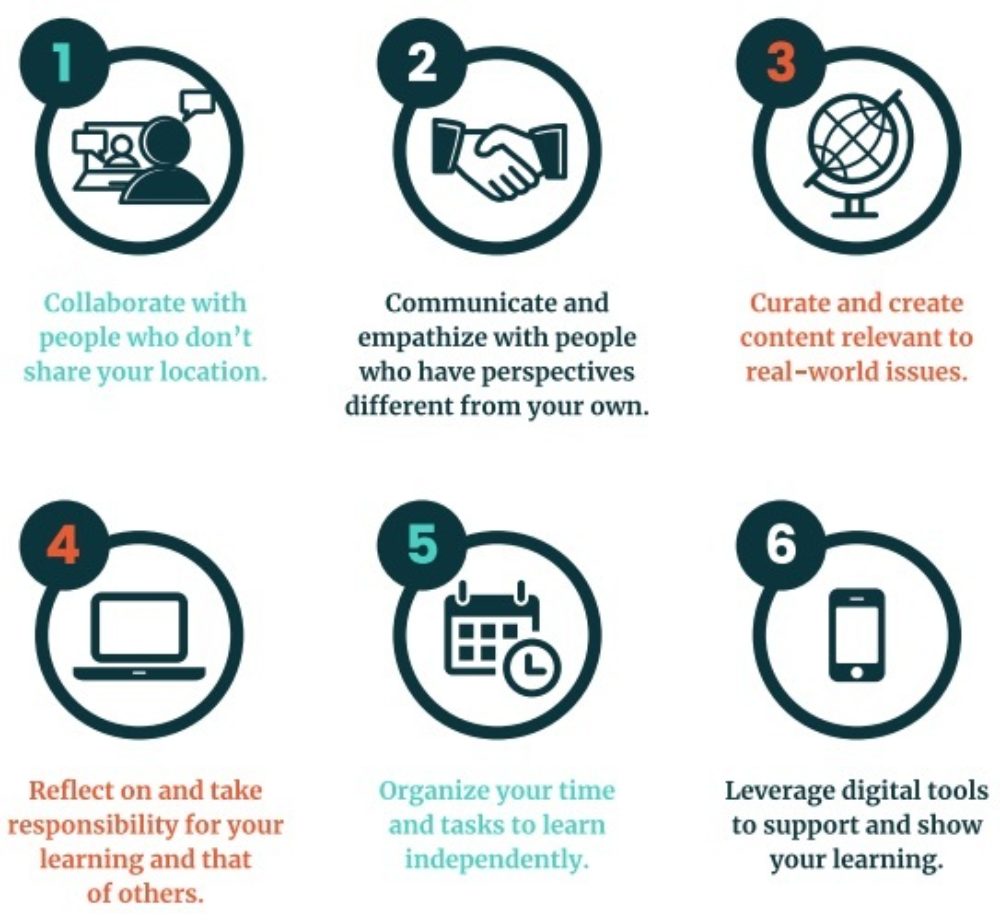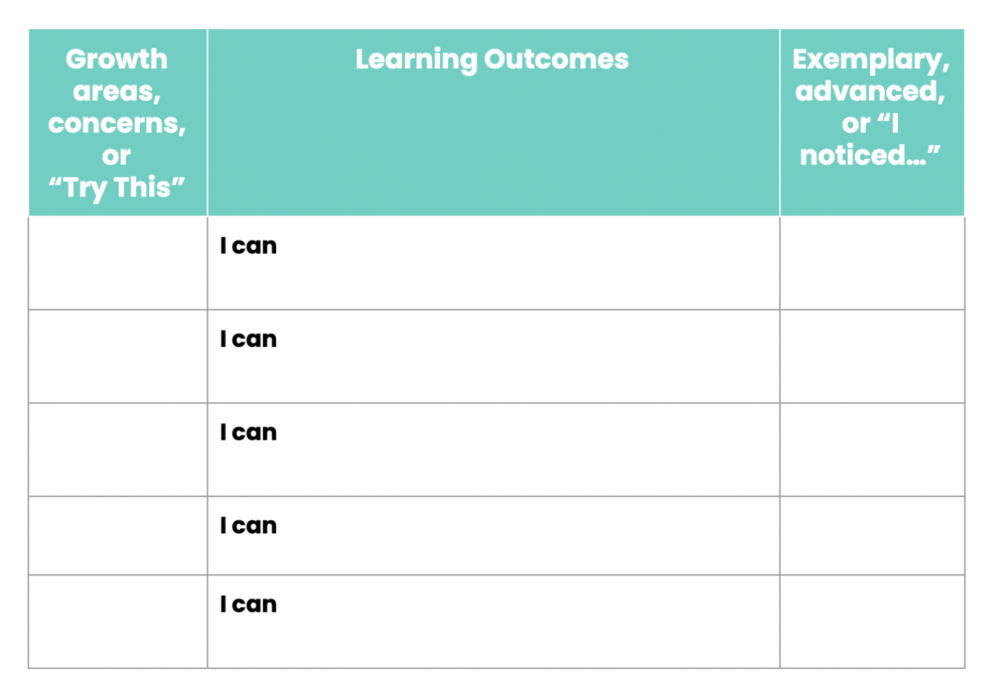Three Shifts Educators Can Make to Move From Content-Driven to Skills-Driven Learning Experiences
Content is often considered to be the bread and butter of any classroom or course. From early education to high school graduation requirements, subjects of study in school have remained consistent and are part of what makes school familiar to students' parents and grandparents.
Content still matters but in addition to its acquisition, we must focus on its application.
An American Institute for Research (AIR) study, Does Deeper Learning Improve Student Outcomes? posits that academic content in and of itself won’t be enough to help students fully engage in the 21st century workplace. Their research suggests that the best approach may in fact be coupling content with skill development through deeper learning. Deeper learning entails a deeper understanding of core academic content, the ability to apply that understanding to novel problems and situations, and the development of a range of competencies and soft skills. It’s a “Yes, and…” approach to content in the classroom.
How might we go about rethinking the role of content in order to better prepare our students for a very different world from the one we inherited? What should stay and what should go?
Learning targets should reflect the skills associated with lifelong learning in the modern world. The Hewlett Foundation offered six core competencies in 2013 that reflect what these skills should be: they are demonstrable, they are transferable (relevant beyond the context of school), and they transcend any one academic discipline. At GOA, we have our own set of student competencies that are aligned with courses in our student program.

Many schools are conducting content audits to ensure the content they are teaching is representative, inclusive, and anti-racist. We should use the content of our disciplines to empower students to develop the skills they need to thrive in a modern world. And we should teach content in ways that ensure equity, agency, and transfer. Here are three shifts educators can make to move from a content-driven learning experience to a skills-driven one
Take time to reflect.
We should select content intentionally to support the development of skills that matter. A starting point is asking ourselves the following questions:
What are the skills that matter to college, career, and life?
What is the relevance of the content I teach to those skills?
How might I (and my students) make choices about what content students learn and how they learn it so they are building those skills and the ability to apply them?
What is the relationship between those skills and the content you teach in your classroom/context?
How can we articulate competencies for skills that transfer across subjects, contexts, and even our school walls?
Action item:
Reflect on an upcoming new unit of study or lesson. What would you articulate is an (or more than one) essential competency (skill) for that learning experience? Reflect on that competency's potential for transfer. Ask yourself, where else in school and life will this skill be applied?
Don’t stop thinking about content.
Competency-based learning (CBL) asks educators to be clear and intentional about what and why they teach so that both they and their students will know when the students have mastered targeted skills. Regardless of how you assess, you can intentionally articulate the skills you hope for your students.
This clarity of skills:
empowers students as active participants in the learning process who can use the same language their educators use to self-assess and advocate for themselves.
establishes a common understanding of quality in performance across teachers, classrooms, and situations, thereby establishing equitable grading practices.
aligns pedagogy to learning goals driving critical decisions around agency, equity, and transfer.
The goal is not to stop thinking about content; rather, decisions about what content to teach and how much to teach should be driven by a focus on core competencies and learning outcomes. It’s also important to apply an intentionally equitable lens to the curation of your content. (GOA is offering a course for educators on this topic this fall, Designing for Equity: Content which will empower educators to apply an equity lens to the content they teach).
Deeper learning requires fluency in relevant content and asks students to develop expertise in content areas as a way to demonstrate important competencies such as research, critical thinking, and literacy. The difference between CBL and more traditional, content-driven education models is that choices about which and how much content are driven by articulated competencies and learning outcomes.
Action item:
Conduct a content audit for a unit. Where can deeper learning take place? What content can be trimmed or adjusted?
Practice writing transferable competencies in student-friendly language.
Competencies should be observable, transferable, transdisciplinary, and written for the learner, not the teacher. You can use single point rubrics like the one below to provide feedback on learning outcomes for a particular competency, and make sure to use student-friendly language.
Action item:
You could use the sample rubric below to guide the creation of learning outcomes and use as a formative assessment tool with students. Also, it’s worth checking out this great resource by Breana Bayraktar on writing learning outcomes.

Additional resources
We’ve put together a short playlist of resources to review, watch, and listen to. Consider these as a playlist to inspire conversation and inspiration at your school and also to provide strategies and tools that might support the shifts from content-based classrooms to ones that intentionally teach skills that are durable and transfer.
Applying Learning in Multiple Contexts (5 minutes). "New learning is fragile until something is done with it. It can be strengthened by simply repeating, rereading, and drilling on the specific information again and again, until it embeds as rote memory. But there’s a better way: Providing students with directed opportunities to employ multifaceted manipulation of information promotes strong, transferrable memory creation."
Are You a Curator or a Dumper? (15 minutes). Jennifer Gonzalez highlights the importance of considering how much content one delivers through a question around how teachers organize and present it. She offers guidelines, strategies, and tools to assist with curation of content. Podcast episode available at this link as well.
Build Skills for 2030 Now With These Ideas (10 minutes). "So the pressure is on, to really consider how we can best prepare students not just for this school year, not just for life after high school graduation, but well beyond. We need to prepare our students for the year 2030 and the future. But how?" This article offers insight and ideas to explore this question.
Teach the Teacher (3 minutes). "Written and developed by students, Teach the Teacher is a student-led professional learning program for teachers that empowers students to address issues affecting them. This program creates an inclusive culture where students lead collaborative conversations with teachers and principals in a constructive and judgement free environment." Read more here.
The human skills we need in an unpredictable world (15 minutes). In this TED talk, Margaret Heffernan cautions against an over reliance on the tools we have now to confront the unexpected of tomorrow. Instead, she encourages building human skills that are timeless.
Vrain Waves, Episode 11: Dan Meyer - If your Content is the Aspirin, How do you Create the Headache? (45 minutes). In this podcast episode, math teacher Dan Meyer shares how to build a story around content to allow for deeper learning in students. His own classroom story and method for rethinking content is relatable for any classroom teacher - not just math.
Going Forward
Finally, remember the purpose of this work. Kurt Prescott, a GOA Instructor, said, “As I learned more about grading and assessment, I increasingly felt tensions with the system where I say I want them to learn and make mistakes and that I’m invested in doing that with them, yet the way I grade says something very different. Competency-based learning, if fully implemented, can actually do that.”
We invite you to participate in any one of our competency-based learning (CBL) courses this summer. This article is part of a series of articles on the practical shifts classroom teachers can make to promote agency, equity and transfer. We invite you to join us in CBL: From Content-Based to Skills-Based Learning for more resources and strategies on this shift.
